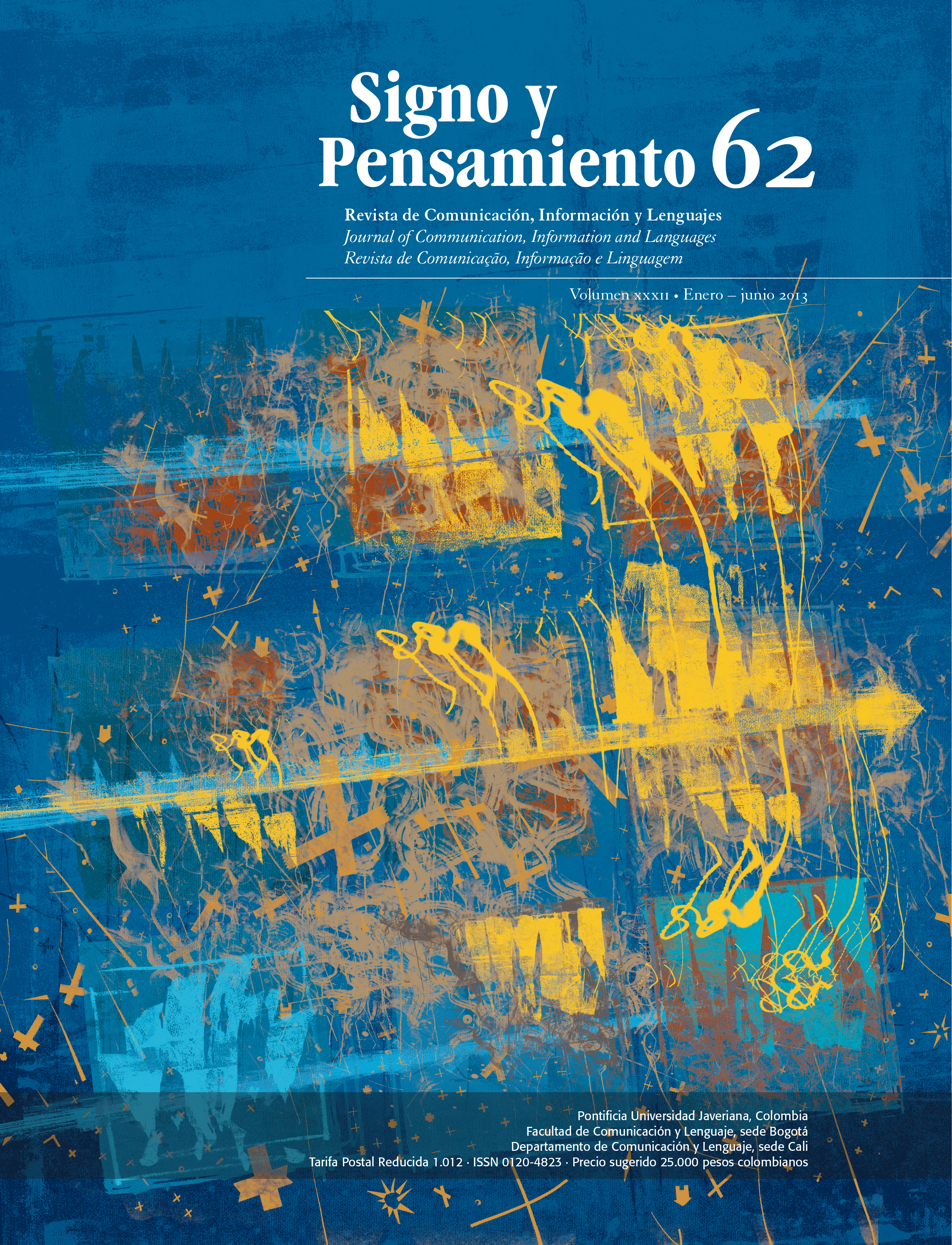Abstract
While the use of violence in the media is not new, the perception of the media coverage of violence itself has evolved. Therefore it was important to understand and describe the impact of the violence coverage in the newspapers: El Sol del Bajío, La Prensa, A. M. and Al Día, among citizens over 18 years, and in turn, explore the appreciation of the people involved in the process of editing the papers in the production of such content. For these purposes we used a qualitative methodology of discourse analysis, the responses obtained mentioned that they “turn people more aggressive”, among others, noting that the coverage of violence generates an impact of fear and concern in the audience. We propose to editorial companies to supervise the management and treatment they give to the “red top” news.
Carrión, F. (2008). Violencia y medios de comunicación: populismo mediático. Urvio, Revista Latinoamericana de Seguridad Ciudadana, 5, 7-12.
Casas, M. L. (2011). Cobertura informativa de la violencia en México. Global Media Journal México, 8 (15), 1-16.
Flores, G. & Mendieta-Ramírez, A. (2012). La percepción de la nota roja periodística en primera plana. Un estudio de caso. Revista de Comunicación de la SEECI. 27, 1-13.
Hernández-Sampieri, R., Fernández, C. & Baptista, P. (2010). Metodología de la investigación (5ª. ed.). México: McGraw-Hill Interamericana.
Lara, M. (2004). Apuntes para un periodismo [negro] consciente. En M. Lara, E. López Portillo (Eds.), Violencia y Medios: Seguridad Pública, noticias y construcción del miedo. (pp. 51- 55). México: Cambio XXI.
Molina-Jácome, I. (2011). Caracterización de la violencia urbana en Barranquilla desde la construcción noticiosa en la prensa popular. Caso del periódico Al Día. Palabra Clave, 14 (1), 157-180.
Pedroza, G. (2006). Violencia en la prensa escrita fronteriza: Análisis de contenido de un diario de Matamoros. En el XII Encuentro Latinoamericano de Facultades de Comunicación Social FELAFACS. Bogotá, Colombia. Recuperado de http://www.javeriana.edu.co/felafacs2006/ mesa2/documents/gabrielapedroza.pdf
Rivera, J. (2011). De los diarios a las galerías: la fotografía de la nota roja de Enrique Metinides. Recuperado de http://bibliotecavirtual. amicmexico.org/index.php?option=com_ sobi2&sobi2Task=search&Itemid=2
Rosenberg, T. (2004). Si sangra, encabeza las notas. Los costos del sensacionalismo. M. Lara, E. López Portillo (Eds.), Violencia y Medios: Seguridad Pública, noticias y construcción del miedo. (pp. 13-15). México: Cambio XXI.
Secretaría de Gobernación (2009). Diagnóstico sobre la realidad social, económica y cultural de los entornos locales para el diseño de intervenciones en materia de prevención y erradicación de la violencia en la región sur: el caso de la zona metropolitana de Mérida, Yucatán. Recuperado de http://cedoc.inmujeres.gob.mx/lgamvlv/ conavim/merida.pdf#page=166
Secretaría de Gobernación (2009). Diagnóstico sobre la realidad, económica y cultural de los entornos locales para el diseño de intervenciones en materia de prevención y erradicación de la violencia en la región norte: El caso de Tijuana, Baja California Norte. Recuperado de http:// conavim.gob.mx/work/models/CONAVIM/ Resource/pdf/TIJUANA.pdf
Wondratschke, C. (2007). Seguridad ciudadana y medios de comunicación en la Ciudad de México. En G. Rey (Ed.), Los relatos periodísticos del crimen. Cómo se cuenta el delito en la prensa escrita latinoamericana (pp. 180-185). Bogotá: Centro de Competencias en Comunicación para América Latina.
This journal is registered under a Creative Commons Attribution 4.0 International Public License. Thus, this work may be reproduced, distributed, and publicly shared in digital format, as long as the names of the authors and Pontificia Universidad Javeriana are acknowledged. Others are allowed to quote, adapt, transform, auto-archive, republish, and create based on this material, for any purpose (even commercial ones), provided the authorship is duly acknowledged, a link to the original work is provided, and it is specified if changes have been made. Pontificia Universidad Javeriana does not hold the rights of published works and the authors are solely responsible for the contents of their works; they keep the moral, intellectual, privacy, and publicity rights.
Approving the intervention of the work (review, copy-editing, translation, layout) and the following outreach, are granted through an use license and not through an assignment of rights. This means the journal and Pontificia Universidad Javeriana cannot be held responsible for any ethical malpractice by the authors. As a consequence of the protection granted by the use license, the journal is not required to publish recantations or modify information already published, unless the errata stems from the editorial management process. Publishing contents in this journal does not generate royalties for contributors.


